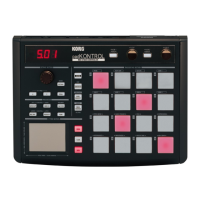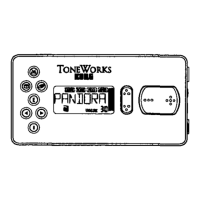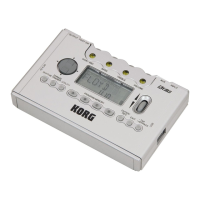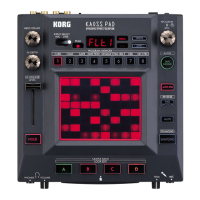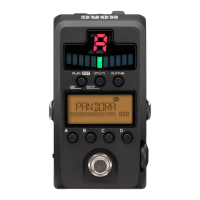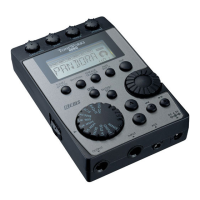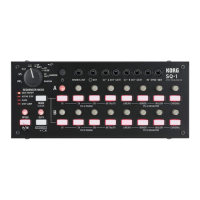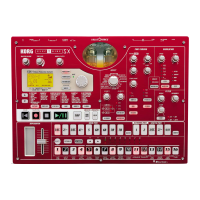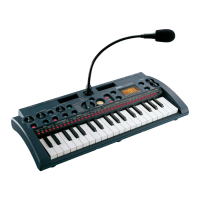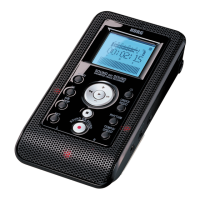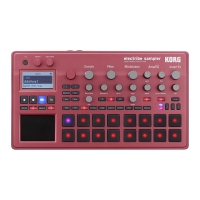50
Style Play operating mode
Page 24 - Preferences: controls
Scale
When this lock function is On, the Scale parameter does not
change when selecting a different Performance, Style or Sin-
gle Touch Setting.
Auto Octave
This lock lets the instrument automatically transpose the
Upper tracks when switching between the FULL UPPER and
the SPLIT Keyboard modes.
On When switching to the FULL UPPER or SPLIT
Keyboard Mode, the Upper tracks transposi-
tion is left unchanged.
Off When switching to the FULL UPPER Key-
board Mode, the Upper tracks Octave Trans-
pose is automatically set to “0”.
When switching to the SPLIT Keyboard Mode,
the Upper tracks Octave Transpose is automat-
ically set to “-1”.
M.Trnsp (Master Transpose)
The Master Transpose value is memorized into the Perfor-
mance or Style Performance. To prevent the Master Trans-
pose to be automatically changed when selecting a Style or
Performance, this lock should be set to On.
On (Default) The lock is engaged. When selecting
a Style or Performance, the Master Transpose
will not change.
Off The lock is turned off. When selecting a Style
or Performance, the Master Transpose value
may change, according to the data memorized
into the Performance or Style Performance.
PAGE 24 - PREFERENCES: CONTROLS
In this page you can set various general parameters for the
Style.
Note: These settings are stored in the Global file. After changing
these settings, press WRITE to save them into the Global. The
Write Global window will appear (see “The Write window” on
page 125).
Chord Recognition Mode
This parameter sets how chords are recognized by the auto-
accompaniment engine. Please note that when in Full or
Upper Chord Scanning mode, the Fingered 3 mode is always
selected, and you must always play at least three notes, to let a
chord be recognized.
Fingered 1 Play one or more notes, according to the
selected Chord Scanning Mode. A full Major
chord will be recognized even if only a single
note is played.
Fingered 2 You must always play three or more notes for a
full chord to be recognized. If you play just one
note, a unison will be played. If you play a sus-
pended 5th, a suspended chord will be played.
The full chord will be recognized when you
play three or more notes.
Fingered 3 You must always play three or more notes for a
chord to be recognized.
One Finger You can also compose a chord using a simpli-
fied chord playing technique:
• If you play only one note, a Major chord is
recognized.
• Play the root note, plus a white key on the
left, for a 7th. Ex.: C3 + B2.
• Play the root note, plus a black key on the left,
for a Minor chord. Ex.: C3 + Bb2.
• Play the root note, plus a white and a black
key on the left, for a Minor 7th. Ex.: C3 + B2 +
Bb2.
ChrdRecMode:One Finger
Scale Mode:RT Tracks
Memory Mode:Chord
Velocity Ctl:Start/Stop
Pref:Ctl (Gbl)
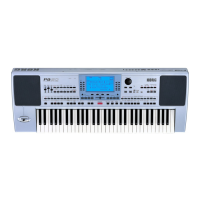
